What is it that NRL trainers and AFL runners actually do out there?
Penrith Park can be a pretty unforgiving place. Case in point: the six and a half thousand locals here don’t know it yet, but they’ll be “thanked” for braving the 12-degree conditions on offer by being rained on towards the end of the game. There are plenty of spare red seats, so the fans can sit wherever they like; there’s plenty of room on the hills at either end of the ground, and lots of space in amongst the giant Panther paw prints walking across the eastern grandstand. Penrith is taking on the New Zealand Warriors in the very rarely cherished 5.30pm Saturday night slot. The local boys, in their one-off Indigenous jersey, are on a run of five-straight losses which has seen them sink into a four-way battle to avoid the wooden spoon. In a dreadful season, they’ve registered season-ending injuries against the names of 11 regular first graders. From severe concussions, to ACLs, to broken hands ... if you’re a quality first-grader out Penrith way, chances are you’re watching this game from behind the bench. The pride of NRL Kiwiland, meanwhile, has suffered four-straight losses of its own and has tumbled out of the top eight. Yep, tonight is only for the die-hards.
But it’s also a night for the pros. The oldest and most experienced out there on the field will be neither a player nor a ref. It’s Ron Palmer, head trainer for the Penrith Panthers – carer of players, runner of coach Ivan Cleary’s messages from up high. He’s one of rugby league’s cult heroes, famous for being a top bloke and infamous for being spotted on the field more than some players. His suave silver fox hair-and-mo combo has seen him compared to thrill-seeking character Barry “Cougar” Dawson, the star of those bourbon ads a decade ago.
Inside Sport has travelled out west to watch Palmer like a hawk, to study his actions so that we’re able to learn more about his occult role, the one he’s dominated in rugby league for decades. We’ve set ourselves up in the western stand’s front rows, giving us a perfect view of both interchange benches.
After a playing of AC/DC’s Hells Bells, the national anthem of Penrith, we’re underway.
Twenty-five minutes in and with the home side up comfortably 12-0, Penrith backrower Elijah Taylor is struggling behind the play down his team’s end of the field. Our eyes quickly flick to Palmer’s spot on the bench to gauge his reaction: the fact Palmer isn’t there explains why he’s the best in the business. Taylor sustained a knock early in this Panthers set of six tackles, but hid the collision’s painful aftereffects with aplomb ... from everybody expect Palmer. Ronnie knew something wasn’t right immediately after the tackle and made tracks along the sideline, camping in the in-goal area until the ball had cleared down field. “You’ve got to know your players’ idiosyncrasies,” Palmer shared with Inside Sport a day or two later. “Elijah was shortened up for breath for a minute, a bit winded. As soon as I got to him I said, ‘You sweet mate, you ready to go?’ He said, ‘Yeah, I just copped a shot.’ I said, ‘Let me get you back on your feet.’ And away he went. You need to know if your players have a high pain tolerance, or if they have too-high a pain tolerance. Sometimes players suffer bad knocks and obviously have to come off, but don’t want any part of it. They’re the tough bastards who want to stay on ... Elijah’s that sort of bloke.”
Even if it means running backwards towards the bench, Palmer sees every minute of the match. “If you actually witness the nature of a collision between two players, it can give you a real heads-up as to what kind of situation you’ll be faced with when you get out to the player,” he shares, “whether it’s a head clash or a lower-limb injury, or whether they cop a shot in the ribs.”
No longer do lovers of Australian rules across western Sydney have to spend thousands of dollars each year on plane trips to the southern states in search of “real footy”. Nor need they travel into the congested city centre to watch that – albeit ultra-successful – red and white team. These days the real thing happens just a short car trip or train journey away ... every fortnight. A quick scan of today’s record Spotless Stadium home crowd of 19,507 leads you to determine that these fans from the game’s new frontier still can’t believe what they’re watching. The pump-up song of choice here? Hells Bells, naturally. This is western Sydney, isn’t it?
For the second successive Saturday, Inside Sport has camped itself within a stab kick of the home side’s bench. At Spotless, an almost-clear perspex canopy covers the players and support staff, who in contrast to their westie cousins just down the road, actually occupy a real bench, not just plastic chairs. One of the people sitting on it is James McDonald. The 250-game veteran for the Demons is among the Giants’ runners. Game-day squads feature a number of other support staff: trainers who run out drinks, as well as medical support such as physios and doctors. But McDonald’s primary focus on game day is to make sure the coaching staff’s pre-programmed player rotation strategy is executed according to plan. Such a scheme is obviously discussed amongst the squad before a game, but sport rarely goes according to plan. “A lot of it is reminding the players about their rotations,” McDonald tells us. “The players are locked-in to set rotations but sometimes, for whatever reason, the system can get thrown out a little bit, with players getting caught up in the drama and excitement of the game. Sometimes you have to remind them: ‘It’s time to come off, time to rotate.’”
So, what if a player doesn’t want to come off; what if he thinks he’s going a bit alright and that the team really needs him? “Every now and then a player will tell you where to go ... I was like that myself as a player. I don’t take any offense to it. Generally they’re all pretty good and pretty receptive.”
After a competitive and tense opening few minutes, the Swans’ intensity is proving too much for the young Giants, who are unable to get their running game going under their opponents’ pressure. Greater Western Sydney coach Leon Cameron’s tactical game is being asked several questions, which he’s trying to answer through messages to his players delivered by McDonald. By the time the man in pink has returned from delivering one set of briefs to the Giants’ charges, there’s another message waiting for him ... and out he jogs again. “There were a couple of messages on the weekend where some players weren’t performing at the level the coach wanted, so I just had to tell them things like, ‘The coach wasn’t happy with that effort.’ Or it might be ‘go better at the next contest’ or something like that.”
The Swans pile on the last four goals of the opening term to lead by 22 points at the first break. With players on both sides retreating to their respective mid-field huddles, McDonald seizes on the wide open spaces of Spotless and grabs Giants rising superstar Cam McCarthy for a cheeky kick-to-kick. “Whoever the sub is, they need to have a kick at the break; they could get called up to come on at any time,” McDonald explains. The runner moves the Giants’ tall-timber around the vacant space like a dad would his son or daughter in the backyard. As McDonald explains, this is vital warm-up time for McCarthy, who will eventually join the game around three-quarter time. “Subs can’t actually kick the ball along the boundary line during the match, which means quarter-time is the only opportunity Cam had to have a bit of a kick and a good run. The object is to try and keep the legs from stiffening up too much so that when they get called up, they’re ready to go; if someone goes down with an injury, they need to come on straight away.”
Ron Palmer has been involved in elite-level rugby league for as long as Wayne Bennett has been a first grade coach, the two commencing their lengthy tenures in 1987. Long before that, Palmer had enjoyed several years playing rugby union for Eastwood, which isn’t as exotic as it first sounds, Palmer having attended a school which favoured union over league. He would eventually play six seasons with the Balmain Tigers as a part-time first grader between 1971-76, clocking up close to 40 appearances. Palmer’s day job during his Tigers years was as a PE teacher at the famous rugby league college Holy Cross Ryde, which at the time had pupils with such names as Paul Sironen, Scott Gale and Ben Elias walking its halls.
Palmer scored his first gig as a league strength and conditioning coach under the great Arthur Beetson at the Roosters in ’87, juggling his part-time duties for the Chooks with his teaching job. In 1994, Phil “Gus” Gould arrived to take control of Easts, and everything turned full-time, Palmer’s role included. Palmer would spent 24 years at the Roosters, until the arrival of Brian Smith, who moved everybody aside. Palmer was lucky that Gold Coast Titans coach John Cartwright, an old work-mate of his at the Roosters, was looking for a trainer. A couple of years later, another of his old Roosters' associates, Ivan Cleary, a player he had previously trained, was wondering if he’d consider a role at the foot of the mountains. “Today, my fancy title here at Penrith is performance manager; I oversee the whole strength and conditioning program. But my role on game day is to go out there and be an on-field trainer.”
Palmer doesn’t do all the water running and injury-checking himself though; on game nights he’s helped by a bloke wearing a blue shirt, an accredited level-one NRL sports trainer. Tonight this is former Panthers player and 2005 grand final winner with the Wests Tigers Shane Elford. “If Shane has gone out there to deliver a message and the coach wants another message sent out, I’ll go out when Shane gets back to the sideline. We can’t both be out there at the one time.”
Over the years men in Palmer’s trade have copped plenty of criticism – mostly from opposition fans – for staying out on the field for far too long. A trainer skulking behind an attacking line is a bad look, and has led to some in the profession being labelled virtual on-field coaches. “I get that people don’t want us on the field, especially when we’re defending,” understands Palmer. “It gives the attacking side the illusion that there’s one extra defender there. These days we just get on and do things within the framework of the rules. The league is pretty tough on us. You get fined; I’ve incurred numerous fines over the years, $5000 ... It’s always, um, a difference of opinion between the people who run the game and us.
“In my role, in the orange shirt, I’m essentially allowed onto the field any time, but under the auspices, I’m supposed to be looking after injuries and the welfare of players. Essentially, trainers are only allowed on when their team has the footy. Sometimes it’s abused. In the old days when I was with Gus, it used to happen all the time. In one game, I think we were playing down in Canberra, a player of theirs, Ken Nagas, got away and scored a try. I was out there behind our defensive line when it happened. After the game Gus said, ‘Ron, that wasn’t good enough from you; I’ve recorded you down as a defensive miss.’ We were able to get away with it a bit in those days.”
Palmer’s level-two orange shirt brigade undergoes continuous academic assessment and medical re-accreditation as part of strict operating guidelines established by the NRL. Earlier this year Ron and another half-dozen NRL club trainers were sent away for a condensed but intensive two-week paramedic course, of which participants are still completing on-going modules for. And rightly so, says Palmer.
James McDonald shares the Greater Western Sydney runners' role with the club’s strength and conditioning coach, Lachlan Wilmot. After his two-year assistant coaching tenure with the club ended a few years back (a season of which was as a player), McDonald moved back home to Melbourne permanently. But he was so eager to answer the call of his former coach Leon Cameron, he chose a life of flying up to Sydney and back for Giants' home games. “After I finished as assistant coach, Leon wanted to keep me involved a little bit,” McDonald says. “This year was the first season I had been in the runner role and I really enjoyed it. It’s a good way to keep fit while staying involved in the game.”
Similarly to Palmer, McDonald says just about the only downside to such a fun and important on-field role is the rulebook which accompanies it. But unlike rugby league, there are no-go zones for AFL runners, which at times can seriously hinder their message-delivering duties. McDonald’s take on this is a commonsense one. Like Palmer, he realises that when fans see too much of the men in pink, it can ruin the look and flow of a fast game. “The AFL people on the bench are always monitoring where you’re running; how close you are,” he says. “You’re not allowed to go inside the 50m arc, for example. Obviously you can’t get in the line of the umpire or get caught up in the play. How long you spend out on the ground is always a consideration as well. That’s often a tricky aspect of the job because you might be trying to get a message to a player, but they’re inside the 50 and you can’t actually get to them.
“If the AFL’s officials think you’re spending too much time out there or that you’re getting in the way of the play, you’ll be warned or perhaps even fined. Up until about two years ago each club could use two runners, but they’ve cut it back to one because they don’t want the runners on there. Which is fair enough. You don’t want the runners taking the focus away from the game and the players.”
McDonald will undersell his feats on game day anytime you ask him. But this is no Cliff Young-type all-day shuffling role here. So it must take an enormous amount of endurance work through the week to have him ready for battle ... “Really, it’s only stop-start running during a game,” according to McDonald. “I’ll just go for a couple of runs during the week. I’m lucky with my body that I don’t have any lasting problems from my playing days. Although, I do get a bit tired in the calves, which is probably old age settling in!”
Whatever the code, the next time you're at the footy be sure to take a close look at the runners and trainers on each team. We promise you’ll be astonished at the ground they cover. You’ll soon realise they’re more than just message-deliverers in funky shirts; they’re crucial members of their respective squads ... that they’ll never get their hands on the ball is very much irrelevant.
Related Articles
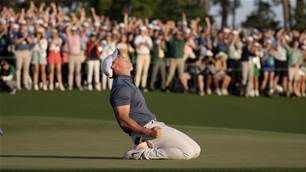
Feature Story: Moving the Needle

The Aussies at The Open
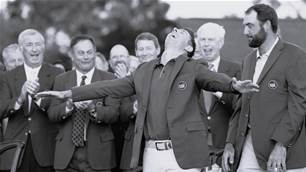





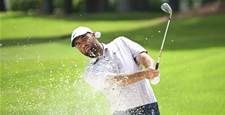
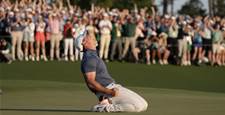
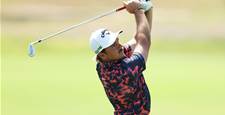

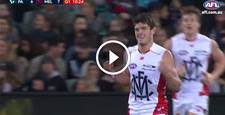
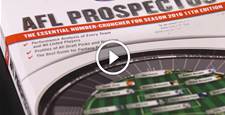
.jpg&h=115&w=225&c=1&s=1)




